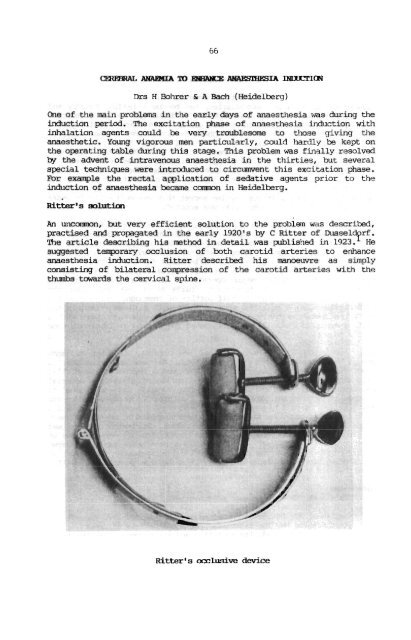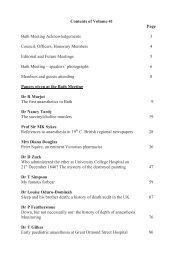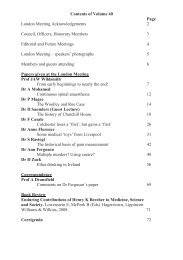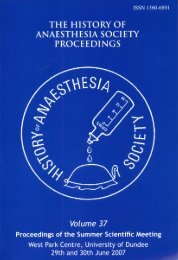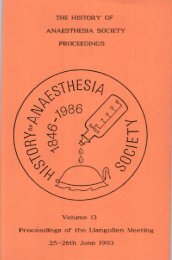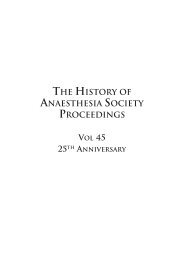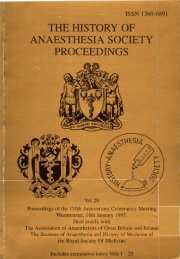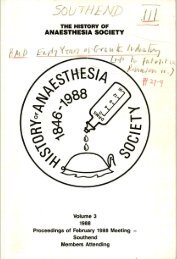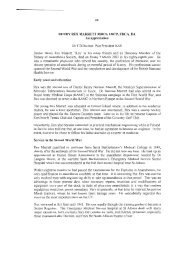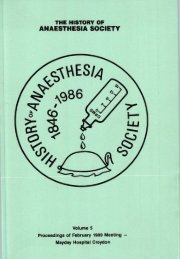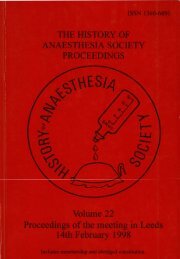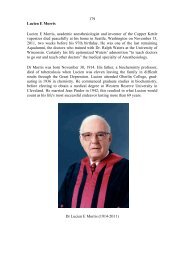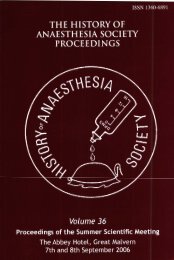Volume 9b - History of Anaesthesia Society
Volume 9b - History of Anaesthesia Society
Volume 9b - History of Anaesthesia Society
Create successful ePaper yourself
Turn your PDF publications into a flip-book with our unique Google optimized e-Paper software.
h e <strong>of</strong> the main problems in the early days <strong>of</strong> anaesthesia was during the<br />
induction period. me excitation phase <strong>of</strong> anaesthesia induction with<br />
inhalation agents could be very troublesome to those giving the<br />
anaesthetic. Young vigorous men particul?rly, could hardly be kept on<br />
the operating table during this stage. Tnis problem was fizslly resolved<br />
by the advent <strong>of</strong> intravenous anaesthesia in the thirties, but several<br />
special techniques were introduced to circumvent this excitation phase.<br />
For example the rectal amlication <strong>of</strong> sedative agents prior to the<br />
induction <strong>of</strong> amesthesia became mmmn in Heidelbery.<br />
An uncarmon, but very efficient solution to the problem was described,<br />
practised and propgated in the early 1920's by C Ritter <strong>of</strong> Dusseld rf.<br />
?he article describing his method in detail was plblished in 1923.' He<br />
suggested temporary occlusion <strong>of</strong> both carotid arteries to enhance<br />
anaesthesia induction. Ritter described his nnnoeuvre as simply<br />
consisting <strong>of</strong> bilateral canpression <strong>of</strong> the carotid arteries with the<br />
thMs tuwards the cervical spine.<br />
Ritter's occlusive device


